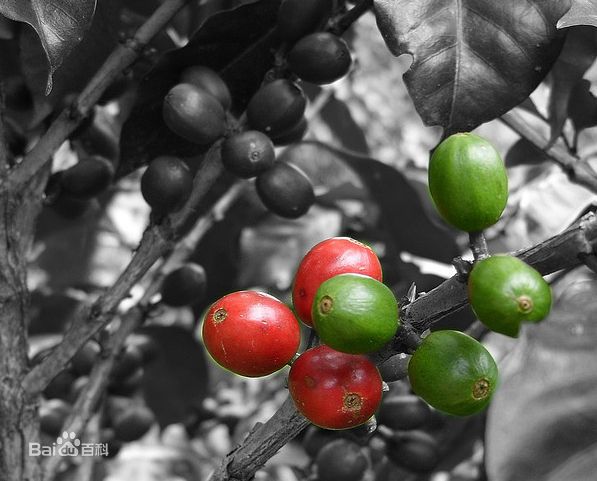Taiwan Coffee grows Taiwan Coffee beans Taiwan Coffee
The term "fine coffee" was first put forward by Ms. Knudsen of the United States in Coffee and Tea magazine. At that time, Ms. Knudsen, as a coffee buyer of B.C. Ireland in San Francisco, was very dissatisfied with the neglect of the quality of raw coffee in the industry, and even some big roasters mixed a large amount of Robesda beans in the comprehensive beans, so she put forward the concept of fine coffee to advocate the improvement of the quality of the industry. This term is used to describe coffee beans with distinctive flavor characteristics that grow in a special environment. Its use in international coffee conferences makes it spread rapidly.
In fact, according to Ms. Knudsen, people started drinking fine coffee, but later, due to the growing demand for coffee, the discovery and use of new coffee varieties led to the decline of coffee quality. later, people even began to dislike this bad coffee and began to turn to other drinks. In this case, Ms. Knudsen re-made people realize the value of boutique coffee, which led to a boutique coffee boom. In the United States, there are enterprises and stores in pursuit of boutique coffee represented by Starbucks. The market for boutique coffee is also growing. In the 1990s, with the rapid increase of boutique coffee retailers and cafes, boutique coffee has become one of the fastest growing markets in the catering service industry, reaching $12.5 billion in the United States alone in 2007. Now boutique coffee has become the fastest growing coffee market. Coffee producing and importing countries around the world are aware of the great potential of the boutique coffee market, and continue to make efforts to the production and production of boutique coffee.
In the 18th century, in 1884 (Guang Xu's 10th year), the British introduced coffee to the three Gorges in Taipei. during the Japanese occupation, the Japanese saw that Taiwan's climate and soil were suitable for coffee, so they introduced "Arabica" from abroad and successfully planted it in the north. Mizuho invested heavily in planting and had a good yield.
In the 19th century, in 1941, rich output and good quality and flavor led to the complete victory of coffee in Taiwan. soon after Japan launched the Pacific War, coffee sales became a problem and there was no one to take care of it. Farmers changed to grow rice, and Japan was defeated and retreated. Coffee declined after no one was interested in it. At present, the larger ones are Antong and Huisun. Around 1931, the Japanese Kimura cafe Company planted coffee in Chiayi and then in Mizuho, Hualien; in 1950, with the help of the US military, instant coffee was introduced to Taiwan, with only Nestle Coffee at the beginning; 1960 was the era of Honey Caf é, when the Star Cafe on Wuchang Street was once a famous clubhouse for domestic literary writers; the first International Coffee Association was established in 1962; coffee was grown on Antong Farm in 1963 A combination of bookish cafes in 1980, garden cafes in the central and southern regions, European-style coffee shops with personal taste, Japanese-style coffee shops and the most prosperous coffee chain at present.

Important Notice :
前街咖啡 FrontStreet Coffee has moved to new addredd:
FrontStreet Coffee Address: 315,Donghua East Road,GuangZhou
Tel:020 38364473
- Prev

What are the types of coffee? what are the coffee tree divisions?
Coffee impression: Body (Aroma) flavor (Flavor) Guatemala coffee: with excellent sour and sweet smooth taste, is the best material for mixed coffee, suitable for deep roasting. Kilimanjaro Coffee: sour, sweet, pure and fragrant, it will give off sweetness and light sour taste after moderate roasting, and soft bitterness after deep baking.
- Next

Which countries grow coffee trees?
● El Salvador (Central America) ranks side by side with Mexico and Guatemala as producers of the Asa-Merdo Group and is competing with other countries for the first or second place in China and the United States. The highlands of origin are large coffee beans of all sizes, which are fragrant and mild in taste. It is also divided into three levels according to elevation: SHB (strictly high grown) = highland, HEC (high grown)
Related
- Does Rose Summer choose Blue, Green or Red? Detailed explanation of Rose Summer Coffee plots and Classification in Panamanian Jade Manor
- What is the difference between the origin, producing area, processing plant, cooperative and manor of coffee beans?
- How fine does the espresso powder fit? how to grind the espresso?
- Sca coffee roasting degree color card coffee roasting degree 8 roasting color values what do you mean?
- The practice of lattes: how to make lattes at home
- Introduction to Indonesian Fine Coffee beans-- Java Coffee producing area of Indonesian Arabica Coffee
- How much will the flavor of light and medium roasted rose summer be expressed? What baking level is rose summer suitable for?
- Introduction to the characteristics of washing, sun-drying or wet-planing coffee commonly used in Mantenin, Indonesia
- Price characteristics of Arabica Coffee Bean Starbucks introduction to Manning Coffee Bean Taste producing area Variety Manor
- What is the authentic Yega flavor? What are the flavor characteristics of the really excellent Yejasuffi coffee beans?

